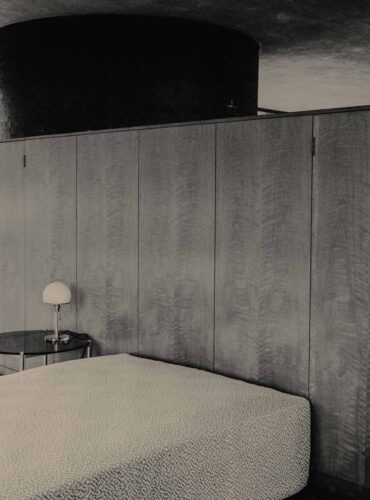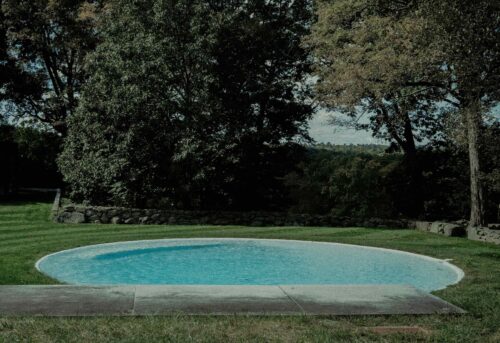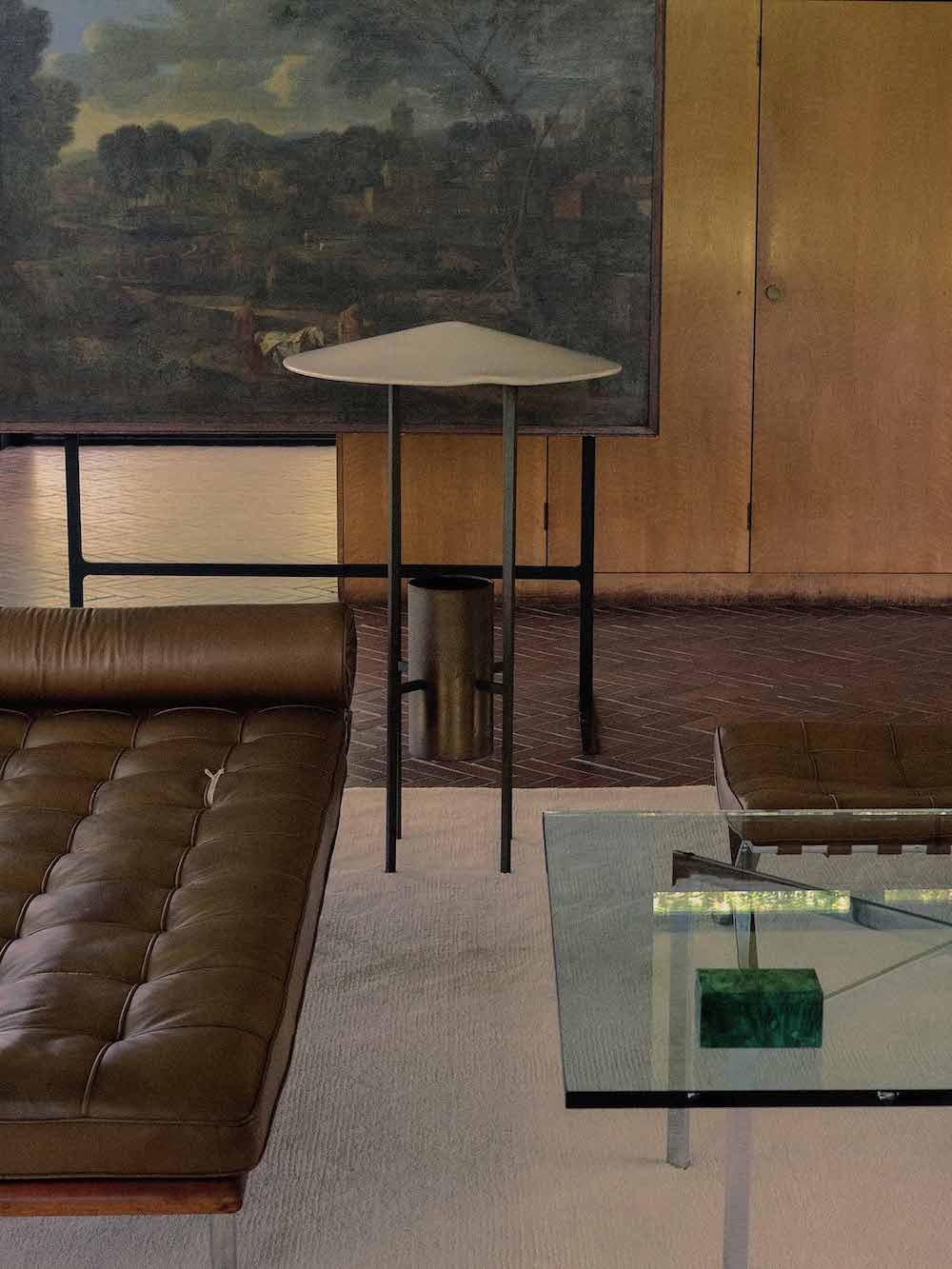Text & Interview Dzenana MUJADZIC | erschienen in CHAPTER №VII »NORMAL THINGS« – WINTER 2022/23
Ob als Schauspielerin am Theater oder als Fotografin, eine Geschichte glaubhaft erzählen zu können erfordert für Anastasiia Duvallie eine Mischung aus unbedingtem Verlangen nach persönlichem Ausdruck und roher Ehrlichkeit. In ihrer spontan entstandenen Serie von Aufnahmen wirft sie einen von der Theaterbühne geprägten Blick auf das Glashaus von Philip Johnson und folgt als Regisseurin der Bildstrecke intuitiv den gegebenen architektonischen Bedingungen. Entstanden ist eine intim anmutende Arbeit, die auch die Präsenz der Person hinter der Kamera spürbar werden lässt. Wir haben mit der in der Ukraine geborenen und in New York lebenden Künstlerin gesprochen.
Chapter Originally being a theater actress, how has your background in drama shaped your visual aesthetics?
Anastasiia Duvallie Being in drama for almost 14 years, I feel like what it taught me is less about visual aesthetics and more about the internal reality. I learned a lot about myself and people in general. It made me become more comfortable with being uncomfortable — staying open and honest should be a goal in any form of art.

When it comes to photography my theater background helped me realize what »connection« actually means, in terms of how much you are able to feel and how deep you can dig. Sometimes it feels scary to know how much I’m telling through my work, especially photography, but it still feels safe in a way that nobody really knows about it. On the other hand, performing a story on stage you might think it is somebody else’s, but it is still you reacting to different circumstances. I think, photography in itself is even more vulnerably honest since you are the one creating it following your own story. In that sense, even commercial work feels personal to me. In conclusion, I think before creating anything we should just find the »human« inside us, not creativity but literally a human with its body and soul — and that’s the blurred line for me between theater and photography.


Chapter Your images of The Glass House built by Philip Johnson seem very much like an imaginative reflection of the actual architecture and linear composition of the interior — how did this series come to life?
Anastasiia Duvallie Thinking about it, I realized it is not easy for me to answer that question because at first it wasn’t about the house but me wanting to be surrounded by nature. The Glass House I think attracted me by its simplicity and quiet respectful interaction with nature — co-existing in balance, complementing and granting each other space to breathe. When I came there I did not have a plan as what to create, it was very intuitive and maybe that is why the outcome looks like a personal reflection of the actual architecture: I did not try to do something seemingly artistic — I was trusting the space and followed its geometry.


Chapter Being an autodidact in the field of photography, what role do intuition and emotion play in the process?
Anastasiia Duvallie I feel both intuition and emotion play a major part in the process. Without connecting and listening to your inner self, the creations are meaningless. In a modern world, following your intuition and trusting your emotions is risky and very scary which is why I feel like even photographers considered as being good at what they do sometimes are playing on the safe side by just offering trained skills. Transporting feelings comes from opening up and taking that emotional risk in your art. If the outcome isn’t what you intended it to be or even bad, at least you were honest with yourself which means you are being honest with others too.


Chapter In general, how much do you think the evolution of artistic expression is tied to personal growth?
Anastasiia Duvallie I think it is so deeply connected. When I look at my early photography starting 2017 I can tell how new to this world I was as my photography was very experimental. Thinking back, I feel like I just didn’t want to reveal too much of myself or maybe I just didn’t know how to do it. I believe that photography as art is about love and wisdom. Those two things take on different meanings throughout life, changing and evolving the artist’s work by reflecting the concept of it continuously.


